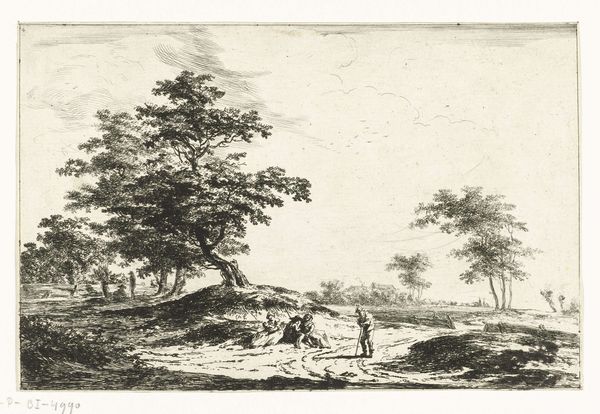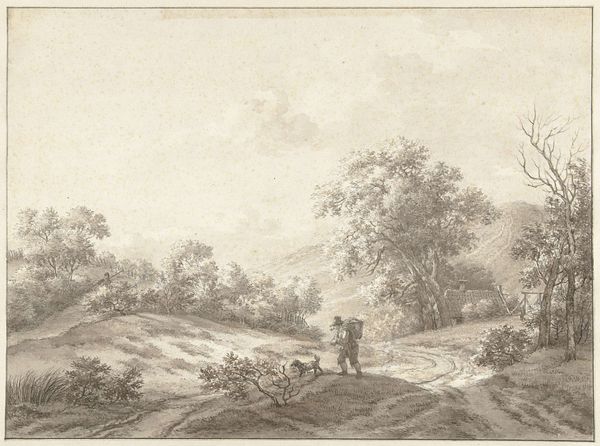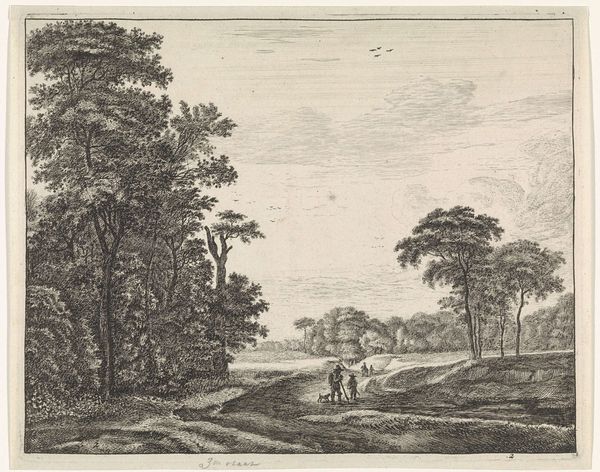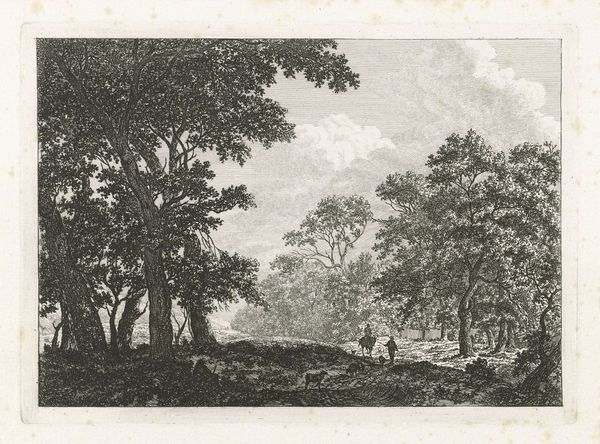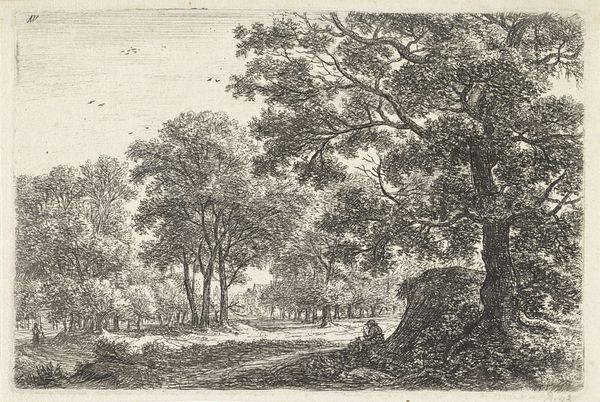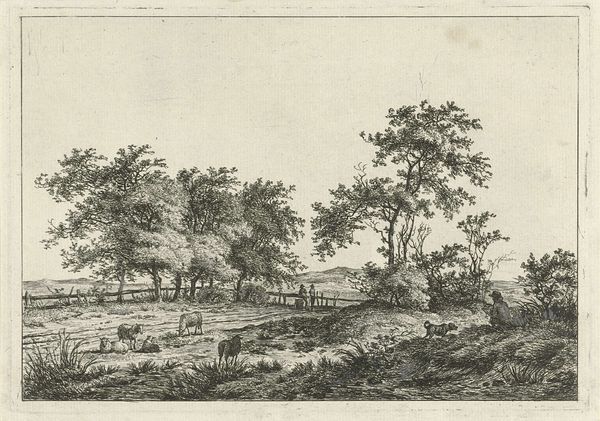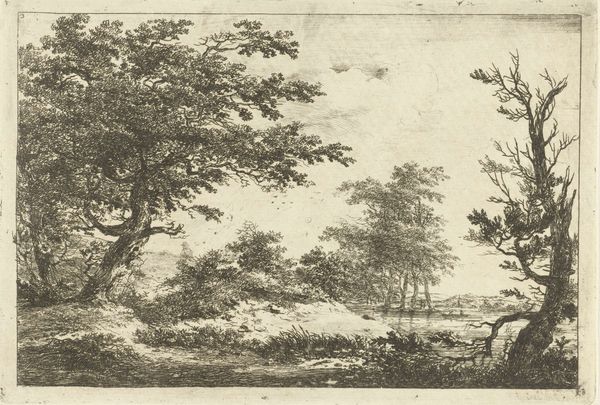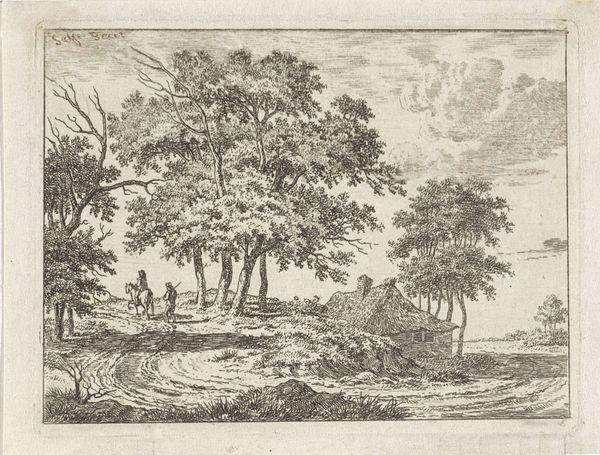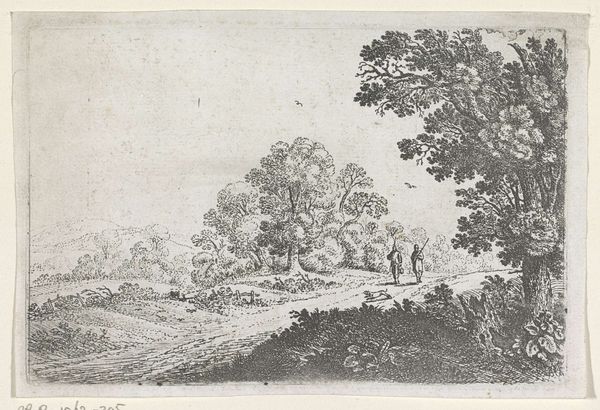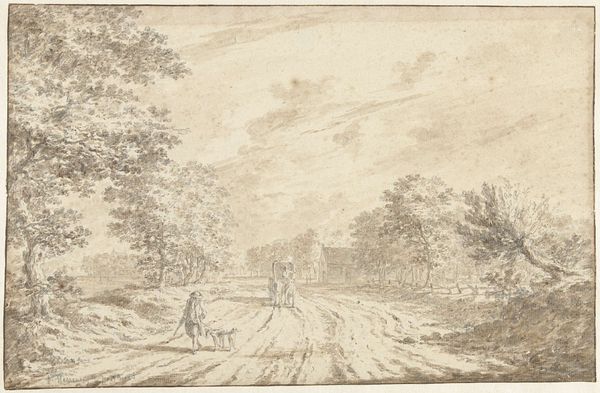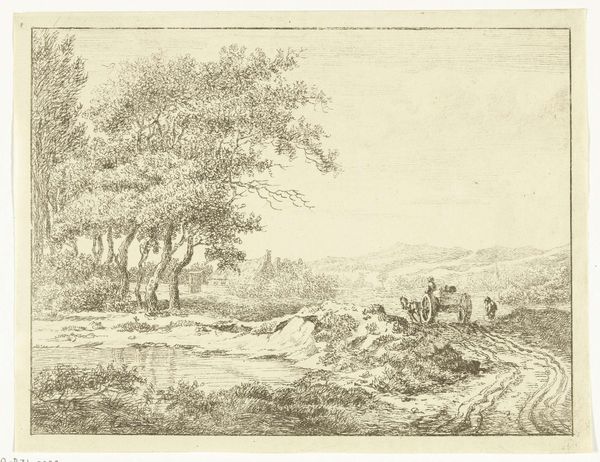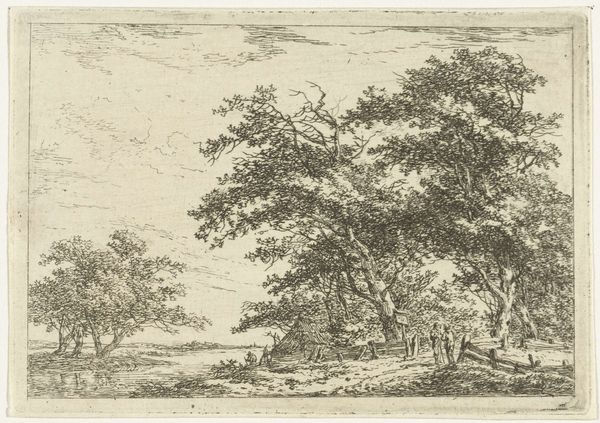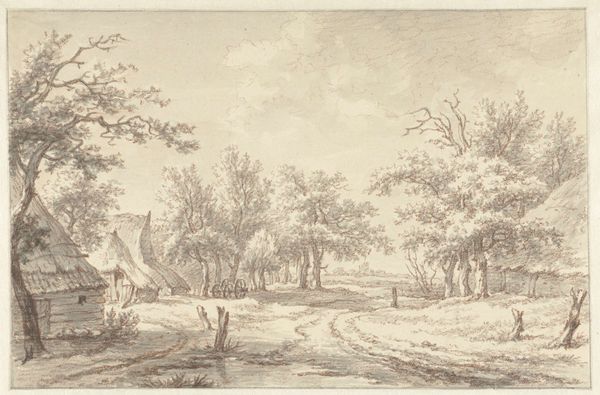
drawing, print, etching, ink
#
drawing
# print
#
etching
#
landscape
#
figuration
#
ink
#
romanticism
Dimensions: height 145 mm, width 210 mm
Copyright: Rijks Museum: Open Domain
Curator: Welcome. We are looking at Hermanus van Brussel’s “Landschap met rustende figuren”, which translates to “Landscape with Resting Figures”. This artwork, created before 1815, employs etching and ink to depict a serene scene. Editor: It certainly evokes a feeling of quietude. The stark contrast of the light etching against the bare page almost mimics a faded memory. The texture gives the impression of stillness, a moment suspended. Curator: The artist’s use of line and shading crafts depth, wouldn't you agree? Note how the density increases with the mass of the trees and thins toward the ethereal, open sky. We can also analyze the way in which formal devices structure space— Editor: While I admire the structural complexity of its rendering, I find the composition problematic in its idealized vision of rural life. It evokes a kind of detached bourgeois leisure, a romanticized tableau ignoring labor and social inequalities in that period. The 'resting figures' suggest a scene far removed from the realities of labor that underpinned that society. Who are these people, and what gave them license to such pastoral calm, while others were undoubtedly toiling? Curator: Yet, aren't the resting figures key compositional elements? Their presence helps ground the viewer. Without the figuration, it could simply be any forest clearing, don't you agree? The arrangement offers balance and serves as a focal point amidst the broad landscape. The linearity itself guides the eye towards specific points of interest, framing the open spaces. Editor: I agree they’re focal, yet this emphasis underscores that idyllic remove from reality, in my reading. The etching style reminds me of 18th-century landscape prints—celebratory and escapist in their own way. It encourages an uninterrogated consumption of the pastoral as an idea, not as a place or reality for all who inhabited it. Curator: Van Brussel creates a cohesive and carefully articulated image, irrespective of any implied social narrative, through a play between dark and light, line, texture, and overall arrangement, rendering an environment both tranquil and beautiful. Editor: Precisely, this conversation invites the public to not just look, but ask who this “tranquility” was available to, at what cost, and how such portrayals obscure complex historical forces still affecting our experience of class and place today.
Comments
No comments
Be the first to comment and join the conversation on the ultimate creative platform.
